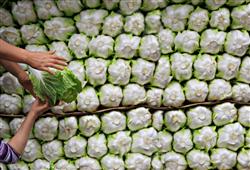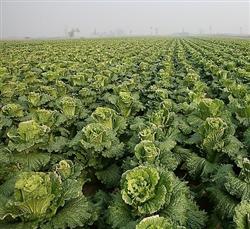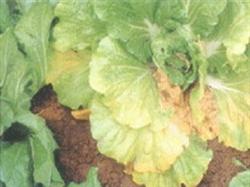Cultivation techniques of Chinese Cabbage in Spring

The main results are as follows: (1) Variety selection: at present, the main varieties suitable for the cultivation of Chinese cabbage in spring are spring general and spring crown. (2) sowing and raising seedlings: Chinese cabbage seedlings can pass vernalization after 15-20 days at 5 ℃, resulting in immature bolting. The suitable time for seedling sowing in open field should be in the middle and last ten days of March, and be on the market in the first and middle of May. To raise seedlings in greenhouse and small arch shed, it is appropriate to sow seeds in mid-late February and appear on the market in late April. Because adding a small arch shed in the greenhouse can increase the temperature of Chinese cabbage at the seedling stage, make the temperature higher than 5 ℃ without vernalization, and solve the problem of early bolting. (3) soil preparation and fertilization: there are more Rain Water in spring, and topdressing is often inconvenient, so it is necessary to re-apply base fertilizer before soil preparation. ① base fertilizer: generally 667 square meters can be used better mature farm fertilizer 5-7.5 tons, plant ash 100kg, calcium superphosphate 25kg or high-quality ternary compound fertilizer 100kg, potash 30kg. Combined with the ploughing and harrowing process, it can be evenly mixed with the soil. ② as a border: it is better to use "high ridge and narrow box" as the form of border. Its advantage is that it can deepen the plough layer, promote the development of root system, facilitate ventilation, reduce the occurrence and harm of diseases and insect pests, and is conducive to drainage. Generally, the height of the border is 25 cm, the width of the border is 80-120 cm (excluding soil ditch), and 3-4 plants are planted. (4) reasonable close planting: Chinese cabbage is cultivated in spring, because of the short time, it is suitable for close planting, the general row spacing is 35 × 30 cm. (5) Field management ① ploughing and weeding: generally, watering water to fix roots and raising seedlings after planting, ploughing timely after watering or rain, preventing ground hardening, promoting soil permeability, and removing weeds. At this time, the ploughing should be shallow, to hoe the topsoil as the degree, do not hurt the roots. ② water and fertilizer management: in spring, water management is mainly to pay attention to drainage and waterlogging prevention. Fertilizer management is mainly based on the premise of adequate application of base fertilizer, topdressing according to seedling conditions in each growing period. Rosette stage: generally apply 2.5 tons of human feces and urine and 10 kg of urea. Heading period: focus on the initial and middle stages of heading. In both cases, quick-acting fertilizers should be used and applied in advance. Generally at the beginning of the heart immediately topdressing, every 667 square meters with human and animal feces and urine 1 ton, urea 10-15 kg. Topdressing again after the drum, and combined with the application of 20 kg potash fertilizer. ③ pest control: the main diseases of spring Chinese cabbage are soft rot and downy mildew. The main pests are cabbage insects and aphids, which can be controlled with reference to the relevant techniques of pest control.
- Prev

Seed selection and cultivation techniques of Chinese Cabbage
Chinese cabbage is a leafy vegetable with a large number of leaves and forming leaf balls. Is the main harvesting organ. Generally, it can reach 4000-5000 kg per mu. Chinese cabbage has a long growth period. In order to achieve high yield, it is necessary to master several key technologies: one. Apply sufficient base fertilizer: base fertilizer is the basis for a bumper harvest of Chinese cabbage. It's an old dish.
- Next

Control measures of yellow leaf disease (shedding disease) of Chinese cabbage
Chinese cabbage yellow leaf disease is a general term for fungal yellow leaf disease of Chinese cabbage. Chinese cabbage, yellow bud white and other Chinese cabbage, pakchoi and yellow leaf disease occur from north to south. The disease occurred in the seedling stage. The harmful fungus mustard is Fusarium oxysporum, which belongs to the subphylum of semisciferous bacteria. The disease can be sprayed or in the field.
Related
- Where is it suitable to grow horseradish in China? it is expected to see the middle altitude horseradish in Alishan.
- How to prevent tomato virus disease reasonably? (Control methods included)
- Many people like to plant towel gourd on the balcony. What are the main points of this method and management?
- What crops can chili peppers be mixed with?
- Fertilization techniques and matters needing attention in Tomato
- What are the grafting techniques for peach seedlings in spring?
- Harm and control methods of root swelling disease of Chinese cabbage
- What are the pests of sweet potatoes? How to prevent and cure it?
- Symptoms, causes and Control methods of navel Rot in Tomato
- The cause of "Cucumber rotten bibcock" in Farmers' planting Cucumber and its Control Plan

